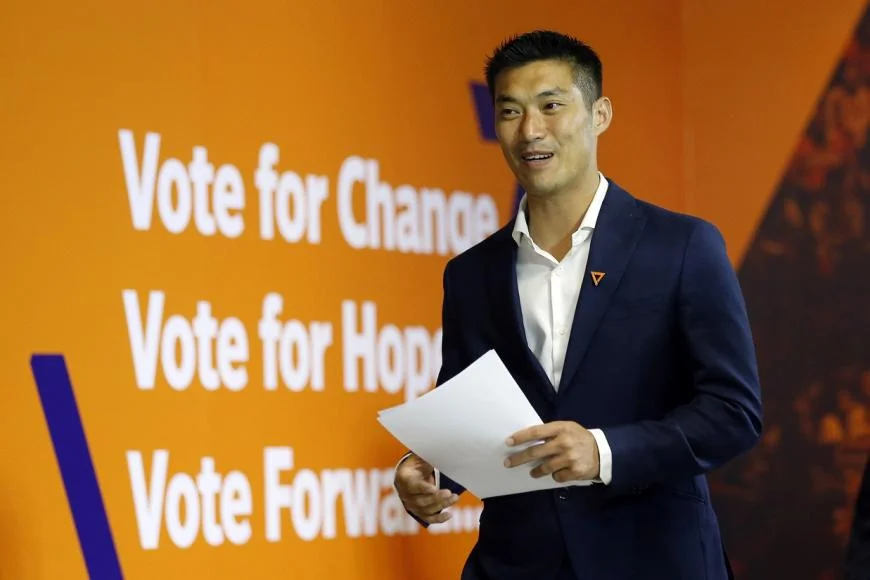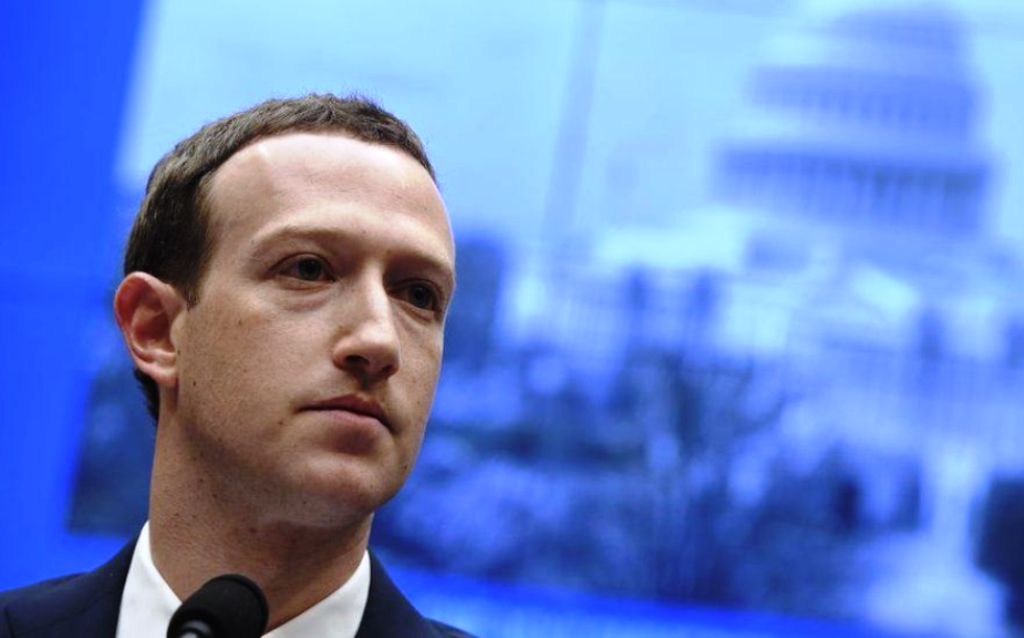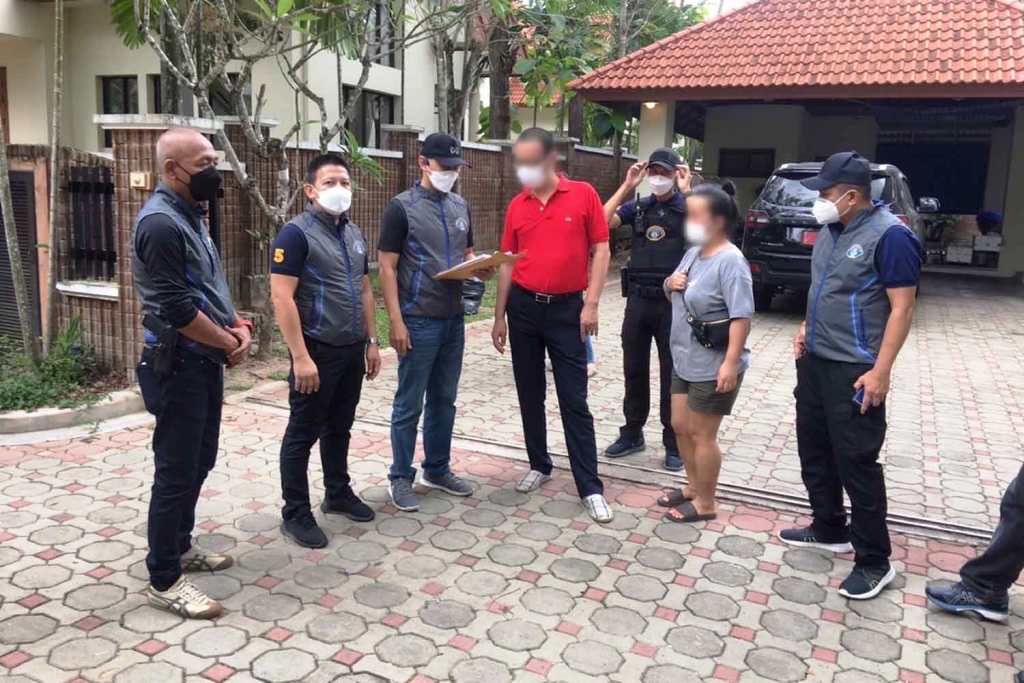European Union
France’s Macron Accidentally Recreated the Chaos of the Fourth Republic
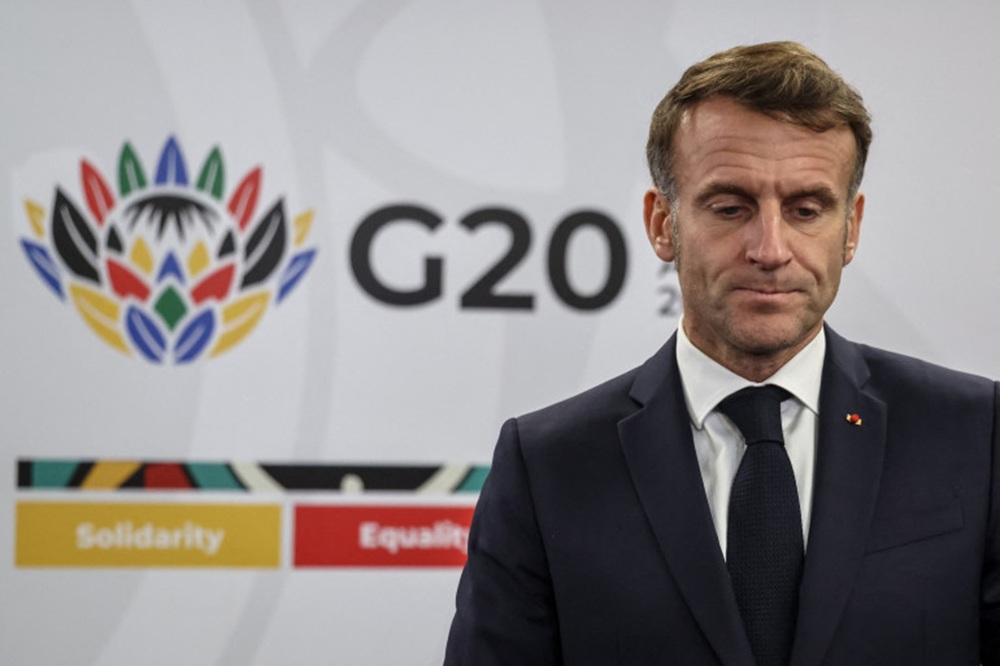
In just over a year, France has gone through three prime ministers. A journalist recently asked me why French politics has become so unstable. The short answer is easy to give, but the full story is about how a system built to avoid chaos has slipped into it.
How Macron Set Off the Current Crisis
The current political mess began with President Emmanuel Macron’s choice in June last year to dissolve the National Assembly and call early elections. He made this move right after the European Parliament elections, hoping a snap election would strengthen his hand.
The bet failed. Instead of gaining ground, he lost his already fragile majority in parliament.
A Presidential System, But Only Under Certain Conditions
France is often seen as a textbook example of a presidential system. The Fifth Republic, created in 1958, was designed to give strong powers to the president and avoid the constant turmoil that marked the Fourth Republic.
This model works smoothly when the president and the parliamentary majority come from the same political camp. In that case, which is how the system was broadly imagined, the prime minister acts as the president’s chief operator, pushing through the presidential agenda.
Things change when the majority in the National Assembly belongs to a different camp. Power then shifts away from the Élysée Palace and towards parliament. The president still matters, especially on foreign policy and defence, but the prime minister becomes the key player on domestic issues.
The French call this cohabitation, and it has happened several times.
Cohabitation in the Past
Socialist President François Mitterrand had to govern with prime ministers from the right, first Jacques Chirac, then Édouard Balladur. When Chirac became president, he faced the same situation from the other side. After calling a snap election that also went wrong, he had to work for several years with Socialist Prime Minister Lionel Jospin.
Those periods were tense and often quarrelsome, but they did not break the system. There was always a stable majority in parliament, even if it was not on the president’s side.
Why This Crisis Is Different
The current crisis is different for a simple reason: there is no majority in parliament. The problem is not cohabitation this time; it is fragmentation.
After last year’s snap election, no political bloc controls enough seats to govern alone. Macron’s centrists do not have a majority, and neither do the traditional right, the far right, or the left. The left-wing alliance of Socialists, Greens, and the far left won the largest share of seats, but still fell short of an outright majority.
Since then, Macron has focused on blocking a left-wing government from taking power. He has planned to build a centrist and centre-right coalition, topped up with enough Socialist MPs to get over the line.
The numbers simply do not work.
- If you give the Socialists what they demand, such as higher taxes on the wealthy or rolling back the pension reform, the right refuses to back the government.
- If you give the Socialists what they want, they pull out and can team up with the rest of the left and even parts of the far right to bring the government down.
Sébastien Lecornu, and before him Michel Barnier and François Bayrou, have all come up against the same dead end.
All this is happening while France’s public deficit keeps growing. Many voters now feel that the political class is unable to govern properly and that the system no longer functions. That mood is feeding support for populist parties both on the right and on the left.
Possible Ways Forward
If I had Macron’s ear, I would suggest a government of national unity, something similar to Switzerland’s model, where all major parties share power. Instead of being held hostage by each group, the president could pass responsibility back to them and make them share the burden of governing.
Another option would be a technocratic government, along the lines of what Italy has used during severe political standstills. In that setup, non-partisan experts run key ministries, and parties support them from parliament.
Both ideas sit uneasily with French political habits. They would require a big step into territory that France has rarely tried. That makes them unlikely in practice. A fresh snap election, sooner rather than later, seems the most probable outcome.
Back to the Fourth Republic?
There is an almost ironic twist to all of this. Today’s situation looks strikingly similar to the old Fourth Republic, a period marked by splintered parties, constant bargaining, and fragile coalitions that fell one after another. The Fifth Republic was designed precisely to break with that pattern.
Yet France now appears to be sliding back into the same kind of parliamentary chaos that the founders of the Fifth Republic wanted to leave behind.
Related News:
Macrons Sue Candace Owens Over Her Claims Brigitte Has a Penis
European Union
The Dayton Peace Agreement Continues to Hold After 30 Years

The Dayton Peace Agreement, signed in 1995, marked a historic turning point at the end of the twentieth century. It kept Bosnia and Herzegovina intact as a state and stopped a war that had lasted three and a half years.
The major global powers agreed on an international deal that protected the country’s statehood, borders, and status in international law.
Acting through the Contact Group, members of the UN Security Council (the United States, the United Kingdom, France, the Russian Federation, and the Federal Republic of Germany) set up the basic framework for long-term peace in Bosnia and Herzegovina.
Ending the war and the limits on building a functional state
Most authors agree that the Dayton Peace Agreement played a key role in ending the war in Bosnia and Herzegovina. At the same time, critics, especially of Annex IV,[3] argue that the ethnic-based constitutional and territorial set-up has held back the development of an effective and functional state.
Unlike many other peace agreements, the Dayton arrangement gives clear powers to international bodies to oversee and support its implementation.
The main actors in this process are:
- Peacekeeping forces, led by NATO, under a UN Security Council decision of December 1995
- The Office of the High Representative (OHR), with the High Representative serving as the top civilian authority for implementing the non-military parts of the agreement and supporting peacebuilding
- The European Union Special Representative, who backs reforms linked to Bosnia and Herzegovina’s path towards EU membership
- The Peace Implementation Council (PIC)
In the first post-war decade (1995 to 2005), international institutions helped to improve security and restore freedom of movement for people across the whole of Bosnia and Herzegovina. In the early years after the war, the Presidency of Bosnia and Herzegovina held its sessions in the National Museum because the Serb member of the Presidency at that time refused to use the official Presidency building in Sarajevo as the seat of state institutions.
Within the first five years, the High Representative, working with civil society organisations, designed and imposed a new coat of arms, flag, and anthem. The ruling parliamentary parties were unable to agree on these basic state symbols.
Parliamentary elections held in 1996, 1998, and 2000, with two-year mandates for state and entity parliaments, were meant to speed up democratic consolidation and support multi-ethnic civic parties. In practice, ethnic parties continued to dominate most election results.
Because ethnic parties could not agree on peacebuilding and state-building, the Peace Implementation Council (PIC) gave the High Representative the so-called Bonn Powers in 1998. Using these powers, the High Representative imposed 145 laws that formally belonged under the authority of the Parliamentary Assembly of Bosnia and Herzegovina.
These laws allowed reforms that supported peace consolidation and the creation of core state institutions. As part of these changes, the State Border Service (later the Border Police) and the Indirect Taxation Authority were created.
The Council of Ministers of Bosnia and Herzegovina grew from three to nine ministries, adding portfolios such as security, justice, human rights and refugees, transport and communications, the treasury and finance, and defence. This expansion gave the state a stronger executive capacity to carry out reforms and to support Bosnia and Herzegovina’s European Union integration process.
Joint Armed Forces of Bosnia and Herzegovina as a key post-Dayton reform
The unification of the separate entity armies into a single Armed Forces of Bosnia and Herzegovina is seen as one of the most important reforms after Dayton. This step brought full integration of entity forces and defence institutions at the state level. The development of the Armed Forces in line with NATO standards opened the way for gradual integration into the NATO alliance, as outlined in the Law on Defence of Bosnia and Herzegovina.
Major reforms also took place in the justice and security fields. The Court of Bosnia and Herzegovina and the Prosecutor’s Office of Bosnia and Herzegovina were established, along with the High Judicial and Prosecutorial Council (HJPC). The Intelligence-Security Agency (OSA) and the State Investigation and Protection Agency (SIPA) created the basic structure for a functioning state security system.
The full implementation of the Dayton Peace Agreement is now closely linked to Bosnia and Herzegovina’s integration into the European Union and NATO. Progress has been slow, largely because of a lack of agreement among ruling parties in the Parliamentary Assembly of Bosnia and Herzegovina. Since 2015, the High Representative has gradually reduced the use of the Bonn Powers.
Geopolitical changes near the end of the third decade of the Dayton period, especially the aggression of the Russian Federation against Ukraine in 2022, threatened peace in Europe but also sped up European integration processes. In this context, the Council of the European Union granted Bosnia and Herzegovina candidate status for EU membership, and negotiations are expected to start at the end of 2025.
Blockades of state institutions in Bosnia and Herzegovina and the obstructive actions of the National Assembly of the Republika Srpska slowed legislative work and reform. However, in 2025, rulings by the Court of Bosnia and Herzegovina helped break these blockades. The removal of Milorad Dodik (SNSD) from the post of President of the Republika Srpska marked a turning point in strengthening state institutions and pushing forward the country’s European integration path.
Political instability and the ongoing role of the OHR
As long as political life in Bosnia and Herzegovina remains unstable, with frequent crises of different intensity, the presence and engagement of the Office of the High Representative (OHR) will be necessary.
Its role is especially important in:
- Stopping actions that undermine the Dayton Peace Agreement
- Helping build the level of agreement needed to pass legislation in the Parliamentary Assembly of Bosnia and Herzegovina, which is essential for progress towards the European Union
Over the past thirty years, the OHR has used the Bonn Powers whenever ruling parties could not reach an agreement in the Parliamentary Assembly. This function is likely to remain important until Bosnia and Herzegovina becomes a full member of the European Union. The length of the OHR’s mandate in the coming years is closely linked to progress in EU and NATO integration and to the need to prevent new security risks and threats.
Recommendations for speeding up Bosnia and Herzegovina’s European integration
Key steps that could support faster EU integration include:
- Joint work by the OHR and the European Union Special Representative on putting the reform agenda into practice
- Turning the reform agenda into a joint document of the OHR and the EU Special Representative, prepared in cooperation with the Parliamentary Assembly of Bosnia and Herzegovina.
A major priority for the OHR is to support the adoption of a European clause in the Constitution of Bosnia and Herzegovina. This would make it easier and quicker to bring domestic law into line with the EU acquis communautaire.
The OHR should also increase pressure on parliamentary parties to form a broad coalition in support of a European, democratic, and law-governed Bosnia and Herzegovina after the 2026 elections. Such a coalition would give the winning parties a clear mandate and responsibility to push forward the EU integration agenda.
The OHR also has an important role in helping create international and regional conditions for constitutional reforms that are needed to speed up EU integration. Strengthening the democratic capacity of state institutions is linked to changes in the structure of the Parliamentary Assembly of Bosnia and Herzegovina.
Under these ideas, the House of Representatives would grow from 42 to 97 members, and electoral territorial units would cross entity borders rather than follow them. A larger number of representatives would allow for more thorough legislative work in committees and commissions.
It would also open space for professional associations and civil society organisations to engage more actively in public policy. At the same time, both the structure and the powers of the House of Peoples of the Parliamentary Assembly would be revised.
For the Council of Ministers of Bosnia and Herzegovina, proposals include the creation of two new ministries: a Ministry of Science and Technological Development and a Ministry of Agriculture and Ecology.
These ministries would respond to long-term needs in research, innovation, food production, and environmental protection, and they would support Bosnia and Herzegovina’s progress towards full European Union membership.
Related News:
Bosnia and Herzegovina Mark 30 Years Since the Dayton Peace Agreement
European Union
Bosnia and Herzegovina Mark 30 Years Since the Dayton Peace Agreement
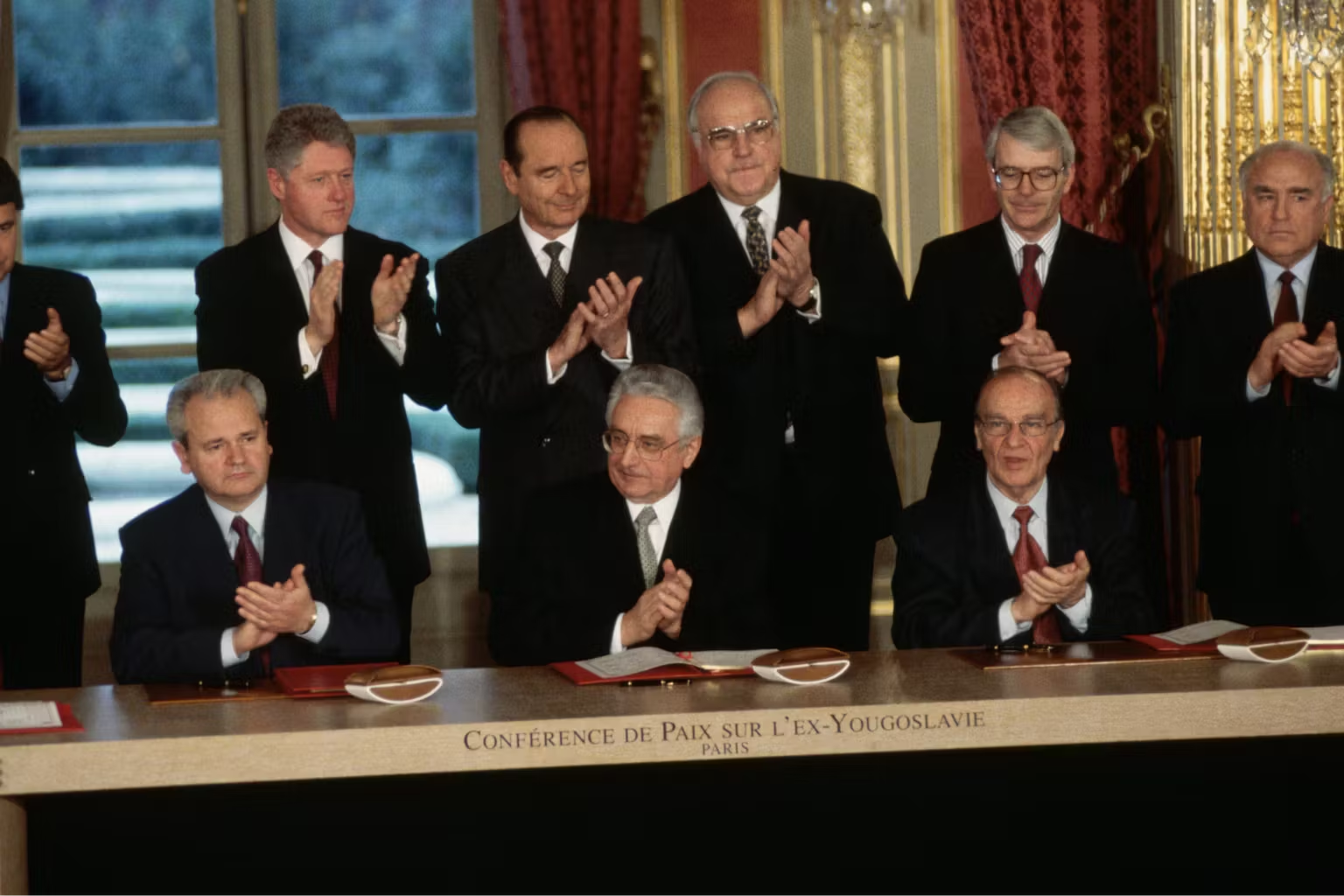
Bosnia and Herzegovina will mark thirty years since the Dayton Peace Agreement on 21 November 2025, just two days before early elections for the President of Republika Srpska (RS), planned for 23 November.
The early elections were triggered by a final ruling of the Court of Bosnia and Herzegovina. The court sentenced Milorad Dodik (SNSD), former President of RS, to one year in prison, later turned into a financial penalty, and banned him from political activity for six years. Under the law, this decision automatically ended his presidential mandate.
The verdict has deepened institutional conflict. Authorities in RS and the SNSD at first refused to accept the ruling and continued to treat Dodik as an active political figure. They have now formally recognised the court’s decision, but state institutions and international actors still demand full and unconditional respect for judicial rulings.
This has created a clear paradox. On paper, Dodik has been removed from political life. In practice, he still controls the SNSD and large parts of the RS institutional system. This gap between formal restriction and real influence sits at the heart of the “Manchurian candidate” model, expressed through the candidacy of Siniša Karan (SNSD) as Dodik’s stand-in.
Candidates, real choice or political proxy?
The Central Election Commission of Bosnia and Herzegovina (CEC) has confirmed six candidates:
- Branko Blanuša (SDS), the joint candidate of the opposition bloc and the main challenger to the ruling camp.
- Siniša Karan (SNSD), the nominee backed by Milorad Dodik and the ruling structure, is widely viewed as Dodik’s political substitute, or, in effect, a “Manchurian candidate”.
The other candidates are Dragan Đokanović (Alliance for a New Policy), Nikola Lazarević (Environmental Party of RS), Igor Gašević (independent), and Slavko Dragičević (independent).
These candidates give the ballot a broader look, but their real impact on the final result is expected to be small. Their main influence is likely to be the possible division of the opposition vote.
How Dodik still shapes the campaign and why the SNSD has not been suspended
Although the Court of Bosnia and Herzegovina imposed a six-year ban on political activity on Milorad Dodik, practice inside the RS tells another story. The ruling says Dodik cannot hold public office or take part in any activity considered political. Yet the real balance of power has barely shifted.
Dodik still controls the key levers within the SNSD. He commands the party structure, an extensive network of loyal officials, and access to public money and institutions. In this setting, he can direct every major process from the background, from the choice of candidates and campaign strategy to party messaging and policy. In effect, he continues to operate as a political leader, even though this type of activity is formally banned.
This gap stems from a long-running clash between RS authorities and state-level institutions in Bosnia and Herzegovina. Tools for enforcing court decisions are weak in areas where state institutions do not have full operational control. This creates a legal and political grey zone where it is very hard to apply the ban.
For this reason, the Central Election Commission of BiH did not suspend the candidacy of Siniša Karan. The CEC is tightly bound by the law and can act only on proven facts that concern the candidate personally. There is no court or administrative ruling against Karan that would make him legally unfit to stand. The SNSD has officially nominated Karan, not Dodik, so the CEC has no legal ground to act, even if many see Karan as Dodik’s proxy.
In short, the election administration follows legal form and procedure. At the same time, political reality plays out in a space where formal rules and real power no longer fully match.
Rhetoric, hate speech, and Dodik’s impact on the campaign
During the campaign, Milorad Dodik and his supporters used sharp and divisive language, often including hate speech directed at Bosniaks and Muslims. This was very visible at rallies, including those in East Sarajevo. SNSD candidate Siniša Karan presented himself as a more “polished” version of Dodik’s message. He copied much of the hate speech and kept a combative attitude towards state institutions, only in slightly milder and more polite wording. Karan did not distance himself from this narrative, which raised doubts about why the BiH Central Election Commission did not question his candidacy.
International organisations reacted to this style of campaigning. The UN Alliance of Civilizations (UNAOC) and the United Nations Special Envoy for Combating Islamophobia, Miguel Ángel Moratinos, sharply criticised the hate speech. They stated that such language against Bosniaks is incompatible with UN principles and values and goes against the core mission of UNAOC, which is to promote mutual respect, constructive dialogue, and peaceful coexistence among people of different cultures and faiths.
The Central Election Commission fined the SNSD 30,000 KM (around 15,000 EUR) for its divisive rhetoric and hate speech. The fine is a formal response, but the ruling structure continues to use inflammatory language. This discourse strengthens the loyalty of SNSD supporters and, at the same time, drives the opposition and international observers to keep a closer watch on the fairness and security of the elections. It is particularly worrying that the competent Prosecutor’s Office has not reacted seriously to these public provocations and open cases of hate speech.
Lifting of OFAC sanctions, what happened and what it means
At the end of October 2025, OFAC (U.S. Treasury / Office of Foreign Assets Control) changed its sanctions list and removed Milorad Dodik on 29 October 2025. This move carries important diplomatic and financial meaning, since it ends some earlier restrictions on his property and financial dealings.
However, removal from the OFAC list does not mean that all other sanctions fall away. The EU, the United Kingdom, Germany, Poland, and Slovenia, among others, apply their own measures. Each state or organisation decides independently whether to keep or lift sanctions.
The end of U.S. sanctions on Dodik and his allies strengthens his position inside Bosnia and Herzegovina and makes his lobbying abroad easier. It does not, however, amount to full political rehabilitation. International actors still view Dodik’s policy line as a source of instability and a channel for Russian influence.
Dodik’s long-term strategy is based on building structures focused on the entity and pushing de facto separatism. Many compare this model to “South Ossetia” in the Balkans, with the possible arrival of Russian military bases. This approach poses serious problems for the EU, NATO, and the United States and continues to shape security and politics in the wider region.
After the lifting of OFAC sanctions, the growing insistence of the Serb member of the BiH Presidency, Željka Cvijanović (SNSD), on cooperation with the United States has shed more light on the background of the arrangement with Washington. In this context, the discussion covers not only Bosnia and Herzegovina’s possible path towards NATO, but also the option of building a U.S. military base on the territory of the RS. The seemingly constructive tone that Dodik’s regime has adopted in contacts with Washington can be read as preparation for such moves.
Will the 2022 Trivić vs Dodik scenario repeat?
Analyses and records from polling stations show that Jelena Trivić likely received more votes than Milorad Dodik in the 2022 RS presidential election. Despite this, the Central Election Commission (CEC), under strong international pressure, declared Dodik the winner.
There is a real concern that something similar could happen in 2025. The answer is that it is possible, but not in the same way. OSCE/ODIHR now has greater monitoring authority, external scrutiny is far stronger, and the legal environment around the elections and pressure on the CEC have changed compared with 2022.
Even with closer monitoring, the risk of manipulation remains high. The SNSD still has a dense network of political and institutional influence over public administration and party resources. This gives the ruling camp ample room for pressure, abuse of power, and various irregularities.
The role of the mayors of Banja Luka and Bijeljina (especially Draško Stanivuković)
Local leaders, above all Draško Stanivuković (Banja Luka, PDP) and Ljubiša Petrović (Bijeljina, SDS), will have a major logistical and political role in the upcoming elections. Their power lies in their influence over polling boards and polling stations, supervision of local administration, prevention of obstruction, and the mobilisation of opposition voters.
If Stanivuković chooses a passive, calculating, ng, or even blocking approach, the opposition will face a serious handicap. If he offers full and active support, the opposition could enter the race with a realistic chance of success. In that case, coordination at the local level would grow stronger, and the opposition bloc would gain more credibility in the eyes of voters.
Is the status of RS under attack, or is RS the one threatening Bosnia and Herzegovina?
Milorad Dodik and the SNSD often claim that Republika Srpska is “under attack” from Sarajevo, foreign courts, and international bodies. However, assessments by international institutions and independent experts present a different view. According to them, Dodik’s policy undermines the constitutional order of Bosnia and Herzegovina, stirs ethnic tensions, increases security risks for the country and the region, and damages RS itself in economic, political, and diplomatic terms.
Put simply, RS as an entity is not under constant attack. It is Dodik’s regime that places Bosnia and Herzegovina at risk and, in doing so, indirectly threatens the stability and future of RS as well.
What would a Karan win mean, and what would a Blanuša win mean?
Political observers and international analysts often describe Siniša Karan as a “Manchurian candidate”, a figure who formally holds office but in reality follows Dodik’s orders. Karan has no strong political profile of his own. He fully carries out Dodik’s instructions and serves as the tool through which Dodik keeps control despite the court ban. In this sense, he acts as a legal façade for the regime. A Karan victory would, in practice, be Dodik’s victory, not Karan’s.
If Karan (SNSD) wins, a continuation of Dodik’s current policy line can be expected. This would likely mean more confrontation with state institutions, the possible creation of parallel structures, higher internal tensions within RS, deeper Russian influence, further economic stagnation and isolation of the entity, and additional instability for Bosnia and Herzegovina.
A win for Branko Blanuša (SDS) would open room for institutional calming and stabilisation. Relations with state-level institutions could become less confrontational. Support from the international community would likely grow. Space would open for political dialogue and reforms and for stronger democratic processes inside the RS. A Blanuša victory would also create an opportunity to start tackling crime and corruption in a more serious way and to gradually weaken Dodik’s hold on power.
The role of the international community and neighbouring states (Serbia and Croatia)
The international community, including the EU, the United States, OSCE/ODIHR, and the UN, is watching the elections in the RS very closely. Their main focus is on respect for court decisions, the fairness and transparency of the election process, and the prevention of hate speech. They use political pressure, sanctions, observation missions, a nd diplomatic activity to influence the situation.
Serbia officially keeps its distance from the elections and says it wants to avoid instability. At the same time, it maintains strong ties with Dodik’s regime. Croatia, for its part, indirectly supports the continuation of SNSD policies because of its own strategic interests in Bosnia and Herzegovina, while also trying not to contribute to wider international tensions.
International actors, including the EU, the US, the UN, and the OSCE, repeatedly stress the need for peaceful and transparent elections. They monitor hate speech, react publicly to threats, and remain ready to act if there are serious irregularities, to protect the credibility and stability of the election process.
Conclusion and short IFIMES assessment
The early presidential election in the RS is taking place in a very tense institutional and political environment. The criminal case against Milorad Dodik has created both a legal precedent and a vacuum of power. The SNSD is trying to fill this gap through its “Manchurian candidate”, Siniša Karan, who serves as Dodik’s proxy.
A win for Karan would mean a continuation of policy based on destabilisation and conflict with state institutions and the international community. In contrast, a victory for Branko Blanuša would open the way for changes in the functioning of institutions, a reduction in tensions, and stronger confidence in state mechanisms in both the RS and Bosnia and Herzegovina. It would also signal a serious attempt to respond to crime and corruption.
The role of the international community remains central. Observation of the election process, resistance to manipulation, action against hate speech, and support for security and constitutional order are all key elements of its engagement.
The final result will largely depend on the ability of the opposition to mobilise supporters and on joint action by local leaders, especially in Banja Luka and Bijeljina. Their active participation could greatly affect both the fairness of the process and the public perception of its legitimacy.
Trending News:
Europe’s Energy Crisis: Solutions and Long-Term Strategy for a Stable Future
European Union
Europe’s Energy Crisis: Solutions and Long-Term Strategy for a Stable Future
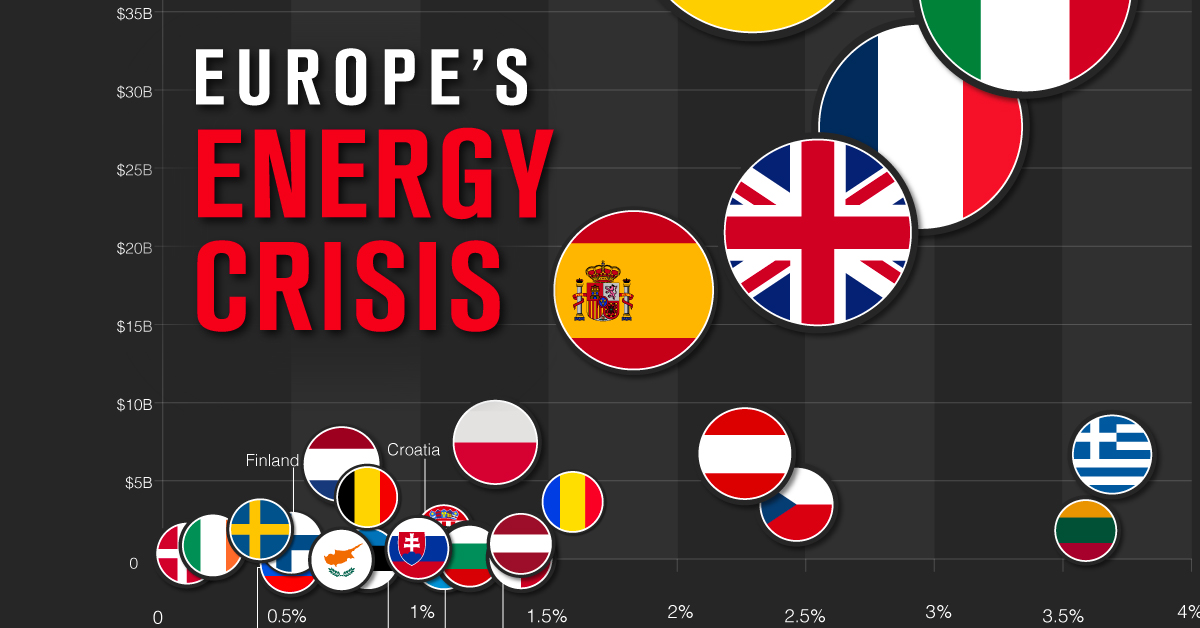
BRUSSELS – Europe’s energy story since 2022 has felt like living with a constant alarm ringing in the background. Prices jumped, gas supplies looked shaky, and many families worried about turning on the heating. Europe’s Energy Crisis started as a sudden shock, but in late 2025, it had turned into a long-term test of planning and trust.
Today, gas storage is high, blackouts are unlikely, and prices are lower than at the peak. Still, bills stay painful for many, and the risk of new shocks has not gone away. The crisis has shifted from emergency mode to a long race to build a cleaner, safer, and more stable energy system.
This article lays out what happened, what has worked so far, and what has to happen next. It looks at real solutions, a long-term strategy, and the roles for leaders, businesses, and citizens across Europe.
What Is Europe’s Energy Crisis and How Did It Start?
In simple terms, Europe’s Energy Crisis began when a long-standing weakness was exposed. For years, many EU countries depended on Russian gas to heat homes, power factories, and make electricity. When Russia invaded Ukraine in 2022, that dependence turned into a direct risk.
Gas supplies from Russia were cut or reduced. Markets panicked. Prices for gas and electricity hit record levels. Households feared winter, and some factories shut down or cut production because power was too expensive.
Between 2022 and 2025, the picture changed a lot. Storage rules, new gas deals, and fast cuts in demand helped Europe avoid the worst case. Now, in late 2025, storage is about 95% full before winter, and prices are far below the 2022 peak. But the deeper questions remain: how to keep energy both affordable and clean, and how to avoid falling into a new trap with another supplier or fuel.
From Russian Gas Dependence to Sudden Shortages
Before 2022, Russia supplied around 40% of the EU’s gas. In some countries, especially in Central and Eastern Europe, that share was even higher. Gas warmed homes, ran power plants, and fed heavy industry such as chemicals and steel.
After the invasion of Ukraine, the EU backed sanctions and support for Kyiv. In response, Russia used gas deliveries as a political tool. Pipelines that had run for decades suddenly slowed or stopped. Each new cut pushed prices higher and raised fears that storage would run dry during winter.
This shock showed how fragile Europe’s energy security really was. It forced governments to scramble for new suppliers, rethink old deals, and start the REPowerEU plan to cut dependence on Russian fossil fuels and speed up clean energy. Details of this effort can be seen in the European Commission’s REPowerEU energy strategy.
Price Shocks, High Bills, and Everyday Impacts
In 2022, gas prices in Europe hit historic highs. Electricity followed, since gas plants often set the price in power markets. The average electricity price in 2022 reached around €227 per megawatt-hour, compared with around €82 in 2024.
For families, this was not an abstract number. It meant:
- Heating turned into a monthly source of stress.
- Some people choose between paying the energy bill and cutting other basics.
- Energy poverty affected tens of millions, with around 47 million Europeans now struggling to pay bills.
For businesses, higher prices meant:
- Factories paused or moved production.
- Small shops faced rising costs for lighting and heating.
- Job security weakened energy-heavy sectors.
In regions like Southeast Europe and the UK, power prices still remain higher than the EU average in 2025, which keeps pressure on households and local economies.
From Emergency to Long-Term Energy Challenge
By late 2023 and 2024, short-term panic eased. Gas storage targets, new LNG imports, and lower demand helped avoid blackouts. Governments rolled out support schemes and price caps to protect the most vulnerable.
Now, the nature of Europe’s Energy Crisis has changed. The main questions are no longer only about getting through one winter. They are about:
- Keeping prices fair and stable.
- Reaching climate goals.
- Staying safe from political pressure from suppliers.
- Making sure the energy system is strong enough for the future.
In short, the emergency is smaller, but the long-term challenge is bigger.
What Has Europe Already Done To Control the Energy Crisis?
Since 2022, the EU and member states have tried a mix of quick fixes and deeper reforms. Some measures worked well, some had side effects, and all of them offer lessons for the next phase.
Gas Storage Rules and Winter Safety Plans
One of the clearest changes is the new rule that gas storage sites in the EU must be at least 90% full before each winter. Before the 2024 to 2025 winter, storage reached around 95%.
High storage levels matter because they:
- Calm markets and reduce price spikes.
- Give governments time if a supplier cuts flows.
- Protect homes and hospitals when demand jumps during cold spells.
In short, storage now acts like a large safety cushion for the continent.
Using Less Energy: EU Demand Reduction Targets
The EU also agreed on a voluntary plan to cut gas use by roughly 15% from 2022 to March 2025. People and companies responded in many ways:
- Lowering the thermostats by one or two degrees.
- Reducing lighting in public buildings at night.
- Slowing production in some energy-intensive factories.
These steps saved large volumes of gas and helped soften prices. The downside was clear, too. Lower industrial demand often meant weaker economic activity and fewer working hours in some plants.
New Gas Sources and LNG Terminals
To replace Russian pipeline gas, Europe turned to liquefied natural gas (LNG) from the United States, Qatar, and other exporters. New floating storage and regasification units were rushed into service. Pipelines from Norway, North Africa, and Azerbaijan were upgraded.
This helped avoid actual shortages. Yet it kept Europe tied to fossil fuels and to global gas markets, where prices can jump due to events far away, such as storms in the US or demand spikes in Asia.
EU Emergency Tools and Cross-Border Help
The EU also agreed on emergency gas sharing rules. These rules say that if one member state faces very low supplies, others must help by sharing gas. In practice, these rules have not been fully activated, but they work as a backup.
Better links between electricity grids and gas networks across borders have also helped. When one country has extra power or gas, stronger connections make it easier to share supplies and reduce the risk of scarcity.
For an overview of how cities and local governments have been dealing with the energy crisis, readers can look at Eurocities’ energy crisis monitor for 2025.
Long-Term Solutions: How Can Europe Fix Its Energy Crisis for Good?
Short-term fixes alone will not end Europe’s Energy Crisis. A lasting solution needs a full system change built around clean, local, and efficient energy.
Key pillars of this long-term strategy are renewables, nuclear, and other low-carbon sources, smarter grids, storage, energy savings, and a fairer market design.
Scaling Up Solar and Wind Power Across Europe
Renewables have already started to reshape the picture. In 2024, solar power in the EU produced more electricity than coal for the first time. Wind and solar together have helped cut power sector emissions to less than half of 2007 levels.
Renewables support energy security because they:
- Do not rely on imported fuel.
- Create local jobs in installation and maintenance.
- Offer stable long-term costs once built.
Still, wind growth has been slower than planned. Delayed permits, weak grids, and local resistance have held back projects. To fix this, countries need faster and clearer permit rules, stronger public support, and grid upgrades that can handle more variable power.
The Role of Nuclear Power and Other Low-Carbon Sources
Nuclear, hydro, and other low-carbon sources such as biomass and geothermal help balance the system. Nuclear plants provide steady output when the wind is weak or the skies are cloudy. Hydro plants can ramp up and down to match demand.
There is real debate about nuclear cost, safety, and long-term waste. Because of this, some EU countries plan to build new reactors or extend existing ones, while others are phasing them out. Each country is choosing its own mix, but at the EU level, these sources still play a strong supporting role to wind and solar.
Smarter Grids, Energy Storage, and Flexible Demand
A power system with a lot of wind and solar needs more than just new turbines and panels. It needs:
- Stronger power lines across and within countries.
- Digital control systems that react in real time.
- Storage, such as batteries and pumped hydro, is used to keep power for when it is needed.
Flexible demand, often called demand response, is also important. The idea is simple: price signals and smart devices encourage energy use when power is cheap and clean, and cut use when the grid is tight. For example, an electric car might charge at night when wind power is high and prices are low.
Cutting Waste: Efficiency in Homes, Buildings, and Industry
Energy efficiency is sometimes called the “first fuel” because the cleanest energy is the energy not used. Better insulation, modern windows, heat pumps, and efficient machines can sharply cut energy waste.
A few simple comparisons show the impact:
- An old gas boiler might turn 70% of fuel into heat, while a heat pump can deliver two or three times more heat than the power it uses.
- A poorly insulated home can lose much of its heat through walls and roofs, while a renovated home can keep warmth inside with far less energy.
Support programs, grants, and clear rules are essential so that low-income households can upgrade, too, not just wealthier owners. Without that, the transition would deepen inequality.
Making the Energy Market Fairer and More Stable
Current power markets in Europe still link prices closely to the most expensive plant running, often a gas plant. When gas prices spike, power bills follow.
EU leaders are discussing reforms that would use more long-term contracts for renewables and other low-carbon sources. These contracts can keep prices more stable for both investors and consumers. The goals are:
- Fair and predictable prices for homes and businesses.
- Clear signals for investors in clean power and grids.
- Extra protection for the most vulnerable users.
For a deeper policy view, the IMF’s article on beating the European energy crisis gives useful background on these debates.
Key Challenges Blocking Europe’s Long-Term Energy Strategy
Even with strong plans, several barriers still slow progress and keep Europe’s Energy Crisis from being fully solved.
Slow Permits, Local Resistance, and Project Delays
Many wind farms, solar parks, and new power lines face long permit times. Residents sometimes worry about land use, views, or impacts on nature. Court cases and complex rules can add years of delay.
Better planning, honest dialogue with communities, and fair compensation for local areas can help. Well-designed projects that respect nature and share benefits can win more support.
Huge Investment Needs for Grids and Clean Energy
The energy shift needs massive investment in:
- Renewables and, in some countries, new nuclear.
- Stronger grids and storage.
- Building renovations and an efficient industry.
Public money cannot do this alone. Private investors need clear and stable rules to commit funds for decades. At the same time, electricity demand in Europe is still below pre-crisis levels, which makes some investors cautious. Policies that support electric vehicles, heat pumps, and clean industry can raise demand smartly and support new projects.
Uneven Energy Prices and Risk of Social Tension
Not all parts of Europe face the same energy costs. Some regions, such as Southeast Europe and the UK, still pay much higher prices than the EU core. This can deepen inequality and fuel political anger.
Targeted support, such as social tariffs, direct bill aid, and help with home upgrades, is key. People need to feel that the transition is fair and that no region or group is left behind.
Geopolitical Risks and Energy Security Beyond Russia
Even with lower dependence on Russian gas, Europe still imports LNG, oil, and many critical minerals for clean technologies. Trade disputes, new wars, or supply chain shocks could hit supplies or raise prices again.
To manage this risk, Europe needs:
- Many different suppliers instead of a few dominant ones.
- More domestic clean energy and recycling of materials.
- Close work with neighbors like Moldova that are also trying to move away from Russian energy.
What Should Europe Do Next? A Clear Roadmap to End the Energy Crisis
Solving Europe’s Energy Crisis is not a single policy choice. It is a long list of steps that need to move forward together over the next 5 to 10 years.
Policy Priorities for EU Leaders and National Governments
Key actions for leaders include:
- Speeding up permits for renewables and grids through simpler, clearer rules.
- Finalizing energy market reforms that support long-term clean power and stable bills.
- Keeping strong gas storage rules as a permanent safety tool.
- Backing big investments in grids, storage, and clean technologies such as heat pumps and green hydrogen.
- Setting policies that last longer than one election cycle so investors and citizens can trust the direction.
Business Innovation, Green Jobs, and Local Projects
Companies have a major role in building solutions. They can:
- Sign long-term contracts for wind and solar.
- Invest in energy efficiency in factories and offices.
- Develop new technologies for clean fuels, such as green hydrogen, and smart energy services.
Local projects, from city heat networks to community-owned solar, help make the transition visible and real. Public-private partnerships can turn national goals into concrete changes on the ground.
For more context on current strategies and challenges, a helpful overview can be found in this 2025 analysis of addressing the EU energy crisis and strategic responses.
How Citizens Can Save Energy and Support Change
Ordinary people cannot fix Europe’s Energy Crisis alone, but their choices matter. Helpful actions include:
- Turning down the thermostats slightly and avoiding waste.
- Improving insulation when possible and choosing efficient appliances.
- Supporting local clean energy projects and policies that back long-term solutions.
These steps cut personal bills and send a clear signal that voters care about a clean and secure energy system.
Conclusion
Europe’s Energy Crisis began with a sharp shock in 2022, driven by heavy dependence on Russian gas and sudden cuts in supply. Emergency measures, from storage rules to demand cuts and new gas deals, helped avoid the worst, but they did not solve the deeper problem.
The long-term answer lies in a new system built around clean, secure, and affordable energy. That means more renewables, smarter grids, better efficiency, fairer markets, and strong social support. If governments, businesses, and citizens stay focused and work together, Europe can move from crisis management to leadership, with lower risk, more stable prices, and a safer planet for future generations.
Related News:
Romania’s Imperfect Democracy: the Anatomy, Challenges, and Future
-

 News1 month ago
News1 month agoPeace Prize Awared to Venezuela’s María Corina Machado
-

 Politics1 month ago
Politics1 month agoFar Left Socialist Democrats Have Taken Control of the Entire Party
-

 Politics1 month ago
Politics1 month agoHistorian Victor Davis Hanson Talks on Trump’s Vision for a Safer America
-
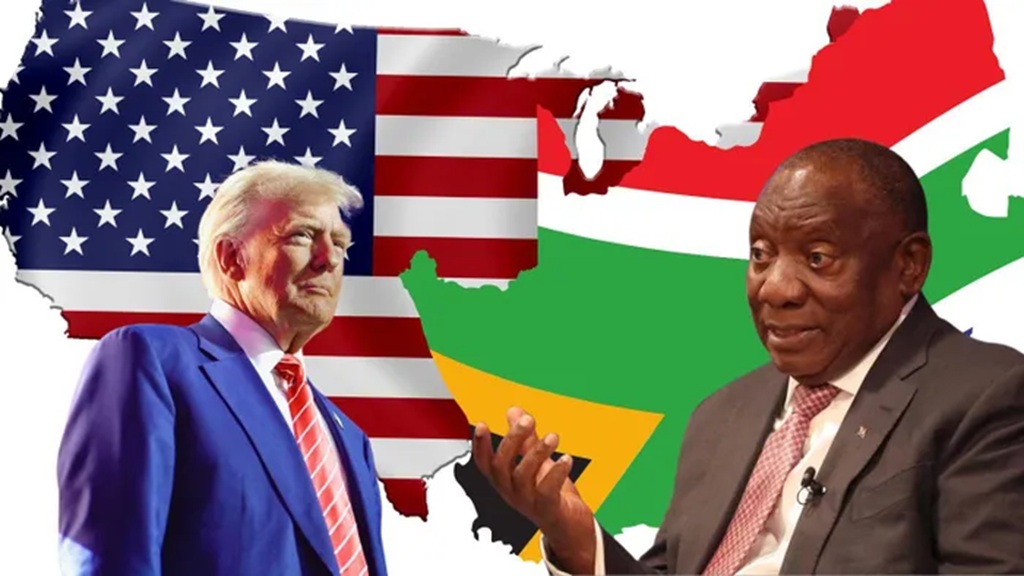
 News2 months ago
News2 months agoSouth Africa’s Audacious Bid to Teach America a Lesson
-

 Politics1 month ago
Politics1 month agoThe Democratic Party’s Leadership Vacuum Fuels Chaos and Exodus
-
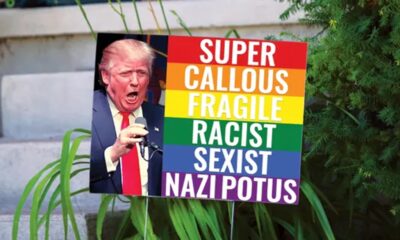
 Politics1 month ago
Politics1 month agoDemocrats Fascist and Nazi Rhetoric Just Isn’t Resognating With Voters
-

 Politics1 month ago
Politics1 month agoChicago’s Mayor Puts Partisan Poison Over People’s Safety as Trump Troops Roll In
-

 News1 month ago
News1 month agoThe Radical Left’s Courtship of Islam is a Road to Self-Defeat














